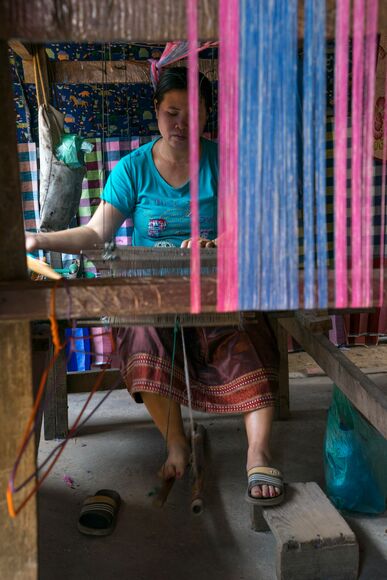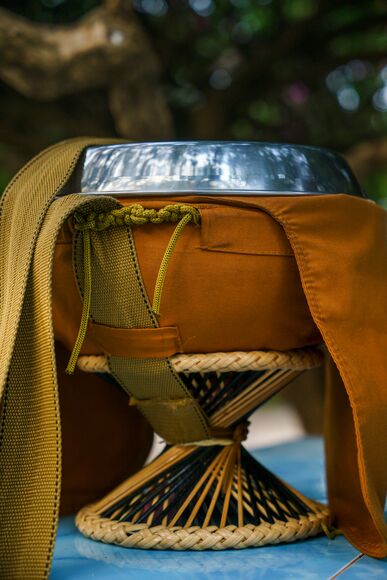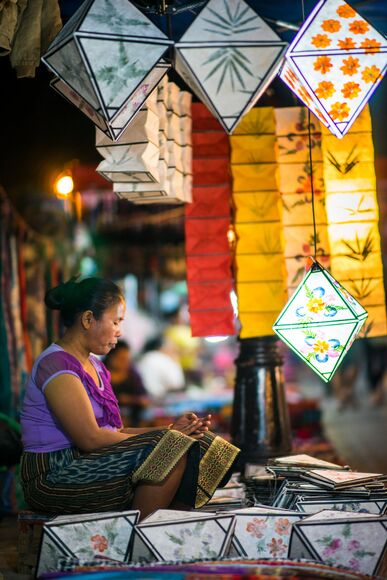Among all the buzz of Southeast Asia, it takes the most passionate of travelers to appreciate this humble country. The appeal of Laos comes from the prevalence of lushly green hills and mountains, constituting 80% of Laos’ total area of 236,800 km2, a vast network of rivers, hidden waterfalls, and ancient relics. Predominantly rural, Laos proudly maintains a pristine countryside of scattered small villages living off subsistence rice farming. Perhaps what stands out about Laos is the unique culture shaped by the interaction with its diverse neighbors throughout history, including the French colonial period; with Buddhism deeply rooted in the Laotian way of life. Get ready for an off-the-beaten-track Laos adventure now!
HOW TO GET THERE?
There are currently 4 international airports in Laos offering direct flights from and to a few countries in Asia. The two in Vientiane and Luang Prabang are used most frequently. China Eastern, Korean Air, and Singapore Airlines have one-stop flights from New York, San Francisco, or Los Angeles in the United States to Vientiane through China, South Korea, or Singapore. If you depart from Vancouver or Toronto in Canada, you will need to take at least two stops.
WHEN IS THE BEST TIME TO VISIT?
The climate of Laos is straightforward with two distinct seasons: the rainy season from May to October and the dry season from November to April. Each of the seasons has its own beauty, but the most pleasant weather is between October to May. Below are the best times for popular outdoor activities in Laos:
- The water levels rising between November and January are a complement to river travel, which facilitates passage along the Mekong River.
- It is better for trekking when the temperature falls in December and January.
WHERE TO VISIT IN Laos
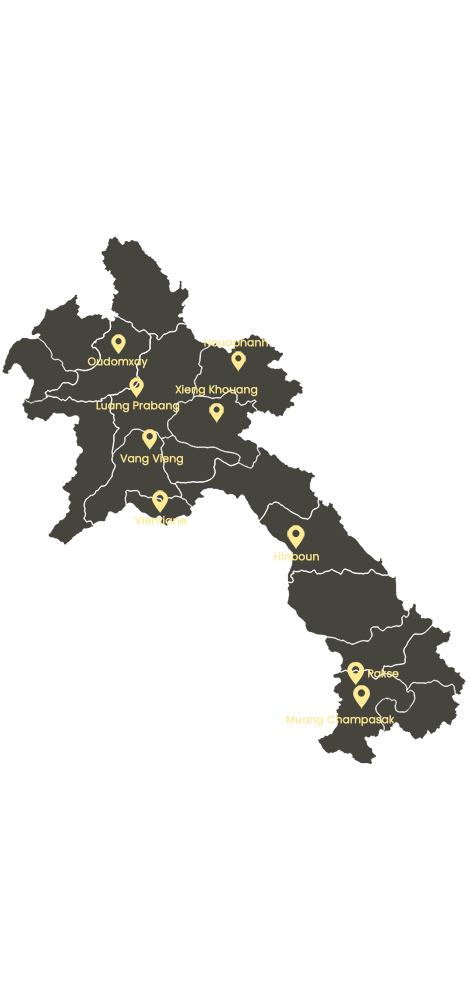
WHERE TO STAY IN Laos
WHAT ARE BEST THINGS TO DO IN Laos

Learn about the tragic history of Laos at the Hidden Cave City
Laos might not surface when talking about the Vietnam War, but it is in fact the most bombed country in the world as a result of this period, which forced the Pathet Lao to shelter in hundreds of caves in Vieng Xay, Houaphanh.

Explore Tham Kong Lo Cave
Renowned as ‘one of Southeast Asia’s geographical wonders’, Tham Kong Lo is a vast limestone cave in Khammouane Province, whose length of 7.5km you can explore in full by small boats.

Cruise down the Mekong
If you land in Chiang Mai, you can start your Laos journey by taking a cruise from there to Pakbeng. This is a great way to enjoy the splendid landscape and discover the banks of the Mekong.

Trek in Muang Ngoi
Take yourself on an adventurous trek through the rainforests and rivers of Muang Ngoi and get to visit remote villages and see the villagers’ lives.

Marvel at Bolaven Plateau
This magical highland has a lot to offer including dense jungles, hidden waterfalls, villages of different ethnic groups, and protected national parks.

Drive back in time at Vat Phou
This UNESCO ruined Khmer-Hindu temple complex is ideal for those who want to learn about the rich history of Champasak.

Nightlife in Luang Prabang
Laos is generally a quiet country, but you can still have a fun night out in the city of Luang Prabang; where there are various bars and clubs, each one with its own unique atmosphere.

Be puzzled by the Plains of Jars
This UNESCO archaeological landscape consists of thousands of mysterious megalithic stone jars spreading all over the place with the biggest ones being as high as 3.5 meters.

Adore Elephants in Pakbeng
Once the ‘Land of a Million Elephants’, these days Laos only has about 800 elephants left. You can find these gentle giants at Mekong Elephant Park in Pakbeng; an ethical sanctuary since it allows neither riding, feeding, nor bathing.

Swim at Kuang Si Waterfall
This three-tiered waterfall has an unusual allure of turquoise water and many cascades, whose pools are perfect for swimming.
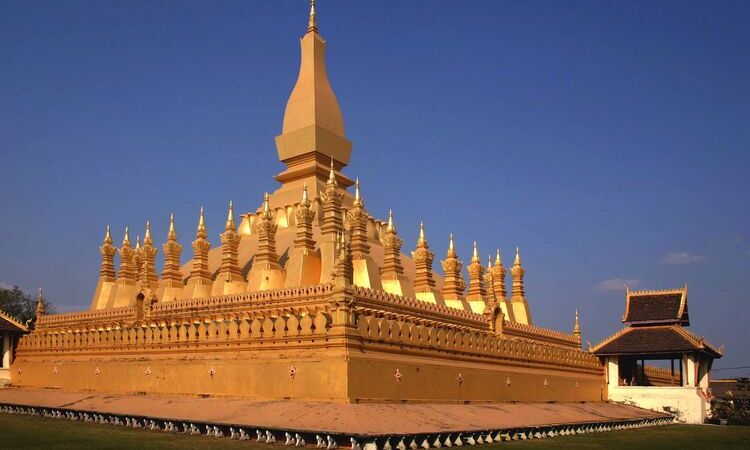
Visit temples and monuments in Vientiane
Slow and old-fashioned, the highlights of Laos’ capital lies in its remarkable Buddhist monuments and temples; which include Pha That Luang, the national symbol; Vat Sisaket; Vat Phra Keo; and Patuxai.

Kayak in Vang Vieng
Kayaking is an exciting way to enjoy the scenic views of karstic mountain ranges formed along the Nam Song River.

Observe Alms Giving Ceremony in Luang Prabang
To attend this peaceful and spiritual ceremony, you will need to wake up at dawn and prepare your offerings in advance; which can be rice, fresh fruits, or traditional snacks.
HOW TO EXCHANGE YOUR MONEY?
The official currency in Laos in the Kip but US Dollars and Thai Baht are widely accepted. Hard currency - including British Pounds - can be exchanged relatively easily in Vientiane and Luang Prabang but even in these major cities, there are few ATMs that accept international credit cards and none that accept international debit cards. The use of credit cards is confined to major tourist hotels and restaurants. Therefore, it is best to bring some cash with you and before going to the rural areas you should prepare yourself some Kip.
HOW TO GET AROUND?

Buses: Extensive and affordable for travel between towns.

Air: Frequent domestic airlines.

Boten–Vientiane railway: Another convenient way to get around Laos

Scooter: The best way to explore Laos.

Taxi: Traditional taxi or Loca (the only ride-sharing service in Laos)
WHAT TO BUY IN Laos
Tips & tricks
- As mentioned above, cash will be your best friend when traveling in Laos.
- Since Laos is a fairly conservative country, make sure to stay respectful to the local traditions and customs. When visiting a temple or shrine, you will have to have your shoulders and knees covered. Other than that, the country is safe and comfortable to travel.
- If you plan on trekking or visiting rural areas, it's advisable to carry a water filter since the water in Laos is typically not safe to drink.
- Always negotiate the price beforehand with tuk-tuk drivers to avoid being overcharged.
- Purchase your bus tickets and tours directly rather than booking through your hotel or hostel since they typical add a premium to them.










